|
|
|
Better Don't Talk
A One woman show, by and performed by Naava Piatka, about her mother
and star of the Yiddish Theatre and Broadway, Chayela Rosenthal.
Presented by The New York State Theatre Institute in the fall of
2006. Scenery Design is by Richard Finkelstein. Costumes by Robert Anton, and Lighting Design
John McLaine |
|
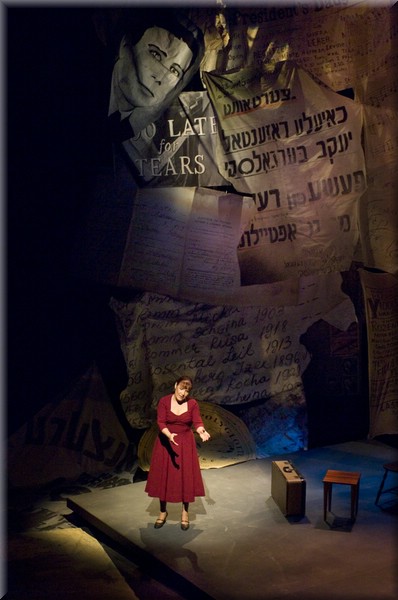 |
Designer Statement:
This production was a literal labor of love.
Naava Piatka wrote it and performed it in honor the memory of her mother
Chayela Rosenthal, star of the Yiddish Theatre in the Vilna
Ghetto, and later a star of the stage in South Africa and on
Broadway. The show also profiles her uncle, composer Leyb
Rosenthal. The work is quite touching. It of course
touches on the many horrors of the Holocaust, but it also is an
uplifting piece about survival and spiritual renewal.
The title of the piece, Better Don't Talk, refers
to the silence so common from survivors of the Holocaust.
Naava was not able to learn details of her mother and uncle's
past until after her mother's death when she started to sort
through the thousands of scraps of paper her mother and father
had squirreled away, records of this period from notes taken in
the concentration camp to family photos to newspaper accounts to
journals to manuscripts in six different languages from Hebrew
and Yiddish to French, Russian, German, and even Afrikaans.
Since the primary research existed, and is
central to this work of truth, I paid a visit to Naava's
wonderful home which overlooks the skyline of New York to see
her treasure trove of family scraps first hand. I was bowled
over first by the amount of it, and secondly to the incredible
historical significance.
I brought my high-resolution camera and
photographed 997 artifacts from her collection of materials, and
these photographs formed the basis of the set. The scraps of
paper that Naava discovered in real life served as pieces |
| of a
puzzle, gaining meaning as the facts gleaned from the scraps of
paper began to be seen in context alongside the revelations
contained in the other scraps. At the start of the show,
Naava is swimming in the sea when when she learns of her
mother's death half a world away. In this I saw a link as
spiritually she was swimming in a sea of these scraps of paper.
So I literally created a sea of these papers,
with a platform in the center of them to serve as a spiritual
life raft. At the start of the show when she is seen swimming,
it is through these papers as the central papers are made of
scrim. Later as she pulls the papers from her suitcase the
parallels are unmistakable. There is also in this a
wonderful juxtaposition of scale in all of this as the papers
are at once tiny but with enormous spiritual and emotional
significance.
The play on scale has a parallel in the
production with Naava's marionette work. |
|
|
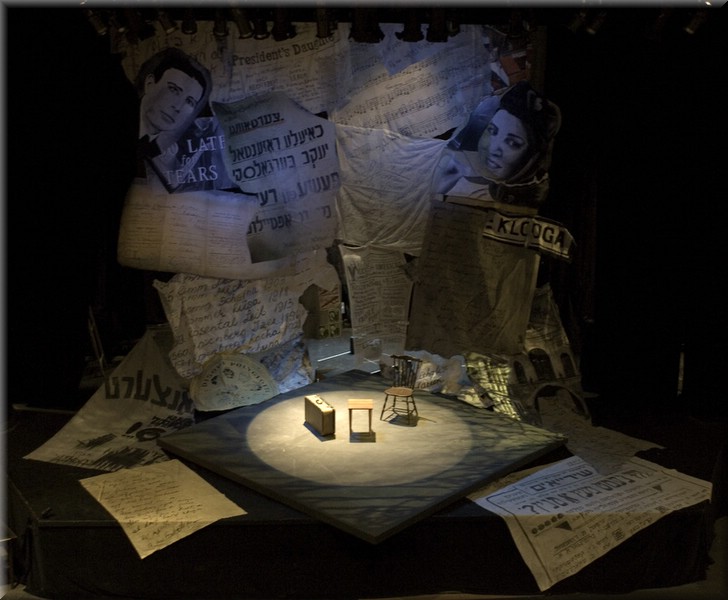
The setting as it appears on stage as the audience
enters. Note from the last photo on this page how close we came to the
initial conceptual rendering. |
|
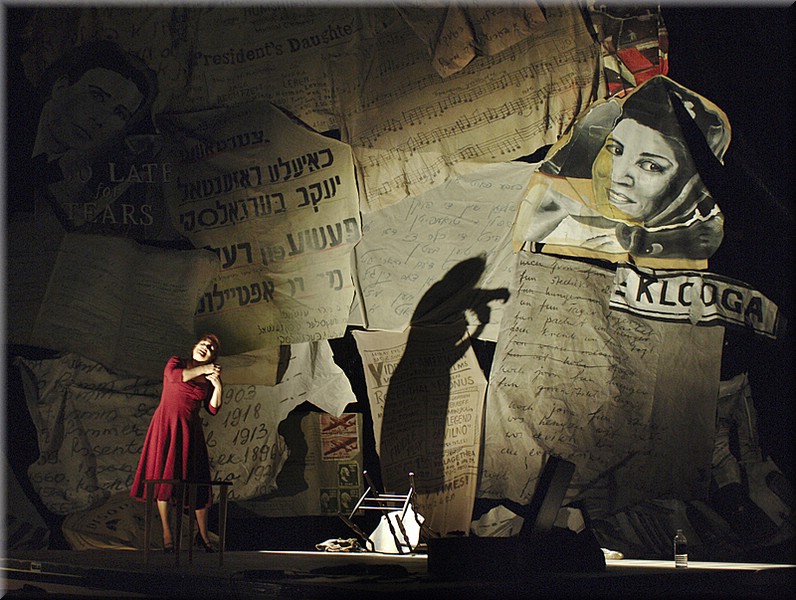
Depicted here is a moment in the concentration
camps with a wonderful film-noir style shadow provided by John Mclaine
right onto our paper "scraps"
|
|
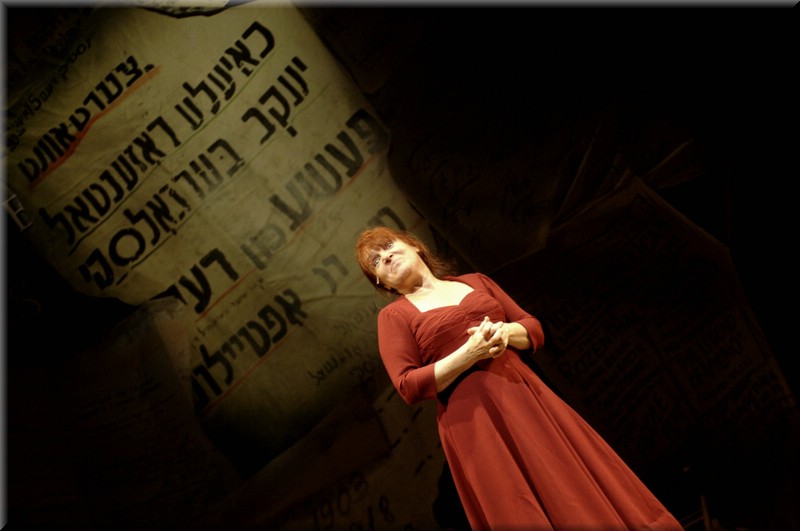
As outlined earlier, the depictions on the drop
are from real artifacts from the story. These would illuminate at the
appropriate time. The paper scrap highlighted in the background is from
a poster for one of Chayele's great stage productions as Naava recounts
that moment in her mother's history.
|
|
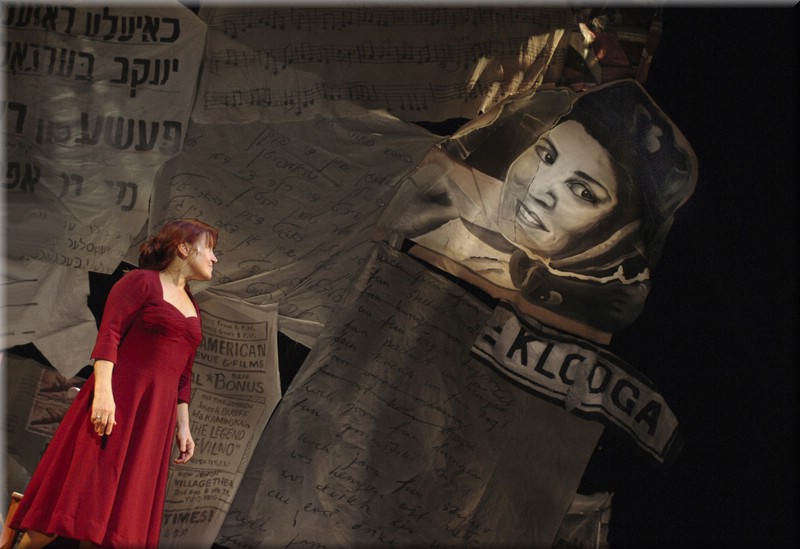
Here you can see how a relationship lives between
mother and daughter, and is reflected not only in the script, but
through scenery and lighting as well. |
|
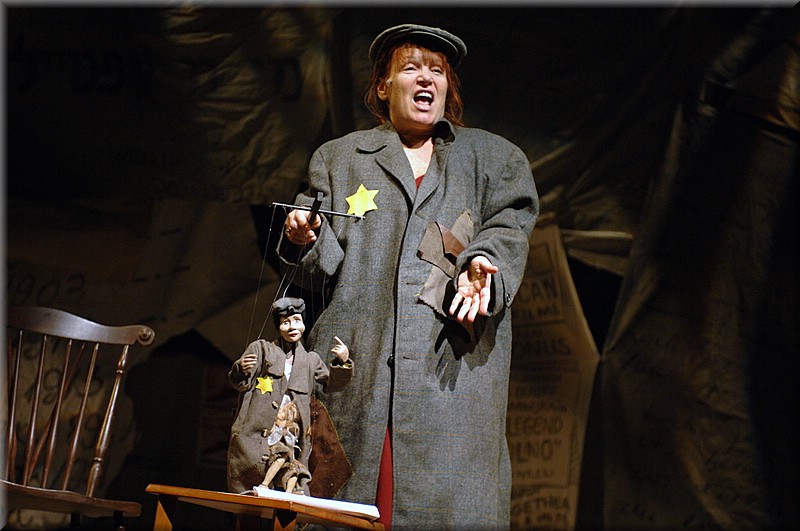
Two views of Naava with her
puppet Yisraelik from her uncle's song by that name. Here is what Naava
writes (in a note to me) about the origins of the marionette:
"[this was] an artistic
collaboration between myself and Helga Muller, a daughter of a Nazi
mass murderer, who publicly denounces and atones for her parent's
role in the war. That's what I find so inspiring, that in a new
generation, 'enemies' dissolve and new cooperation can be found. "
|
|
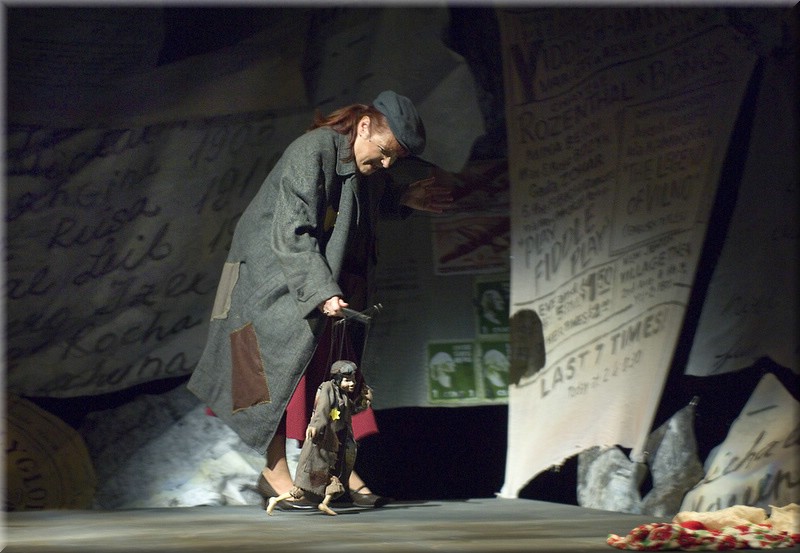
|
|
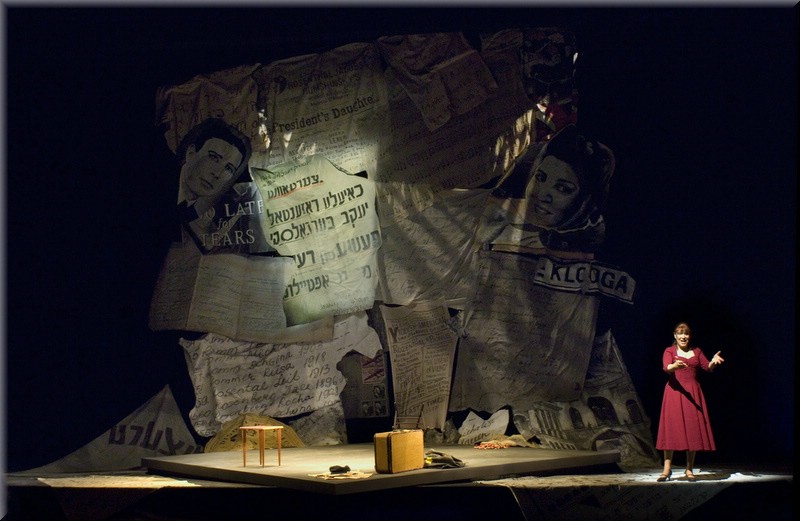
Two more general views of the stage |
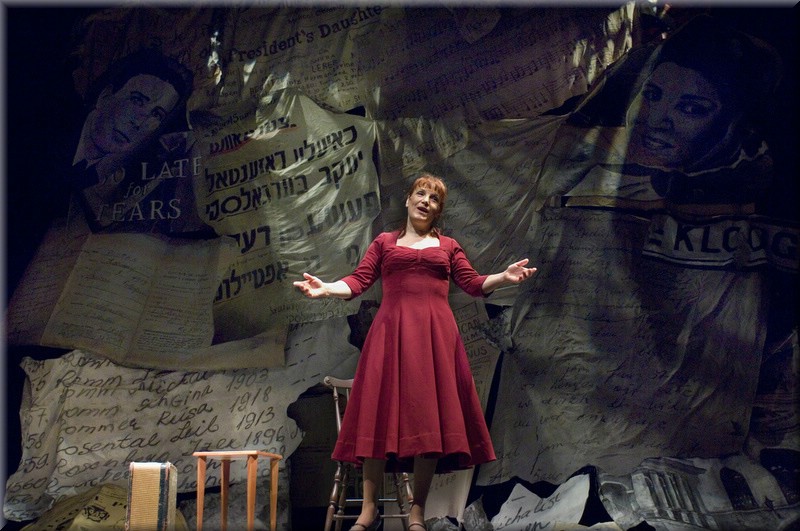 |
|
|
|
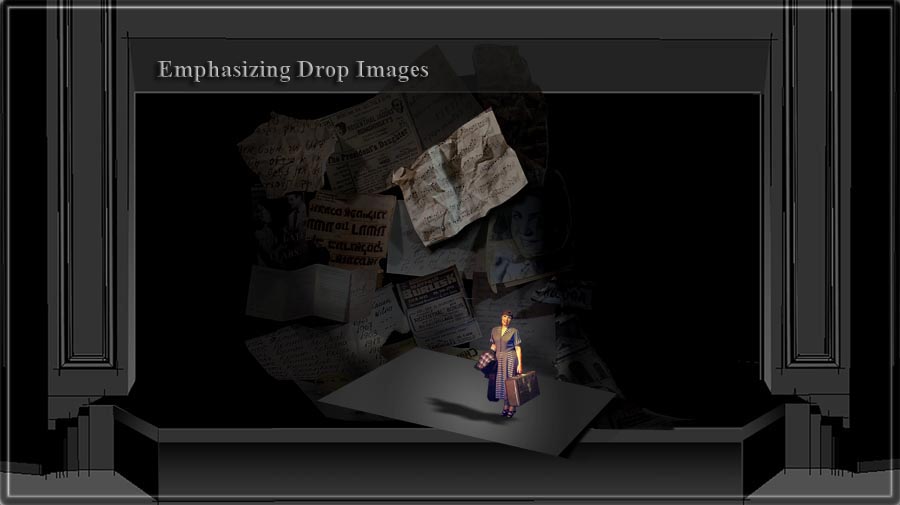
This is one of a number of
conceptual renderings that I created as part of the design process. In
the renderings I undertook not only to define the space, but to also
suggest ways in which the scenery and lighting could interact. |
|